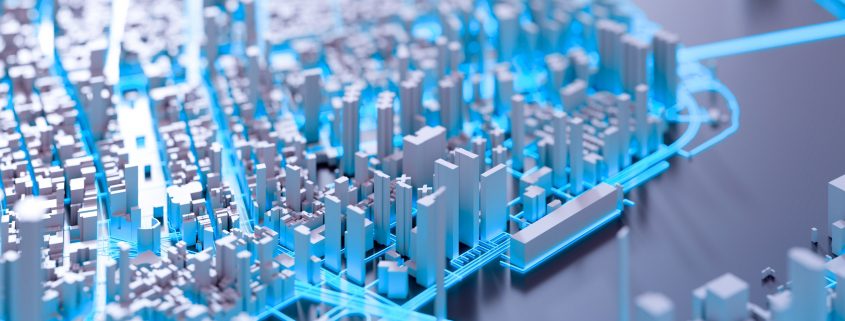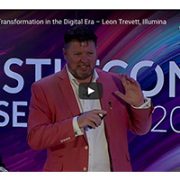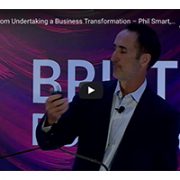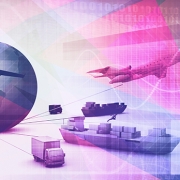Rearchitecting IT to Build a Resilient Supply Chain
Giriraj (GK) Sharma, Associate Vice President, Bristlecone
In medical research, a lot of time and money has been spent on non-communicable diseases over the past three to four decades. In the last few years, as the industry caught up with AI/ML waves, possible scenarios from diagnosis to remote surgery with fewer human interventions were being widely explored. These are all important innovations, no doubt. But what has been largely overlooked are basic capacity, low to medium range lifesaving devices, safety gears, sufficient healthcare personnel (2x doctors, 3x nurses and 8x paramedics), and the ability to ramp up facilities and manage a crisis with the rigor of Project Management.
What was not done in 30 years cannot be remediated in three months. This is what we’re observing. What are the lessons we’re learning? Pursue excellence and innovation, but don’t ignore the basics. Develop a superior response management system in all senses.
So-Called Best Practices
Other industries are not so different from healthcare. As one fails to provide a livelihood to all, another is failing to save all lives. Refer to the best practices manuals and articles published before January 1, 2020. Can they still be referred to as the best practices if they don’t cover the basics, such as scoring based on a PESTLE (Political, Economic, Social, Technical, Legal and Environment) analysis before making crucial decisions related to sourcing and manufacturing outsourcing? From the current state of crisis management to the process of recovery, many businesses are evaluating supply chain strategies. Unfortunately, for some, it’s too late. We’re already seeing the long-term impact. In the aftermath of the pandemic, some companies will cease to exist, while others will be impacted by M&A activity.
What Pundits Say About Resilience
Thinktanks have begun to assert that building supply chain resilience will be more important than achieving excellence. Cash is king – but it’s not everything. Resilience must be a necessary part of the cost of doing business without diluting customer service levels and inflating the price to the customer. Companies that build an ecosystem to ensure customer focus and resilience by rearchitecting their technical landscape to support the resilient supply chain will not only survive but may also be in a position to lead.
Strategies for the Resilient Supply Chain
Gartner prescribes six strategies to build supply chain resilience – inventory and capacity buffers; manufacturing network diversification; multi-sourcing; nearshoring; platform, product or plant harmonization; and ecosystem partnerships. Implementation of these strategies on the current technical landscape and ERP has a profound impact on structure, processes, and business rules and policies – in ERP parlance, the re-implementation and re-architecture of IT platforms.
Resilient IT is Resilient SCM
Over the past five or so years, IT and business leaders have struggled to define a business case for Digital Transformation or ERP Modernization. The need to build Resilient SCM is now evident – but those facing transformation must be prepared to overcome mammoth challenges and embrace opportunities to implement forward-looking business systems for planning, execution, collaboration and innovation with ecosystem partners.
A Different Approach for Resilient IT
Implementation of new strategies will require an approach beyond the 30-year-old Global Template concept, which was primarily designed to capture business data through globally harmonized processes executed across a series of transactions in the ERP system. The focus of ERP modernization now is to design a system capable of providing superior response, supported by data-driven insights and native scenario-driven planning and re-planning to respond effectively. This requires a different and holistic approach that ties together Operations Research, Data-Driven Insights and Context-Specific Processes.
Conclusion
Over the next two to three years, what will separate the winners from the losers on the road to recovery is the readiness to transform, with a clear definition of resilience and alignment of technology with supply chain models of the future. Now is the time for companies to accelerate their digital transformation strategies and engage partners with proven SCM processes and technical capabilities. While the world aspires to go back to a pre-2020 way of life, there’s now widespread appreciation for the basics – and great understanding of the need for resilience. It’s the ability to embrace transformation that will drive business survival.
Bristlecone is a pioneer in supply chain consulting and technology (SAP S/4HANA, IBP, Ariba and EWM). We’ve developed the SCM AI Platform, together with the frameworks, accelerators and much-needed methodology, to assist customers on their journey to build IT systems, ensure business resilience and avoid the negative impact from another Black Swan event.







